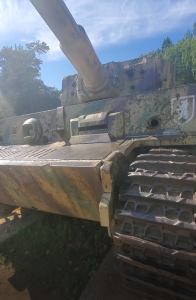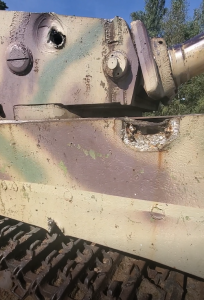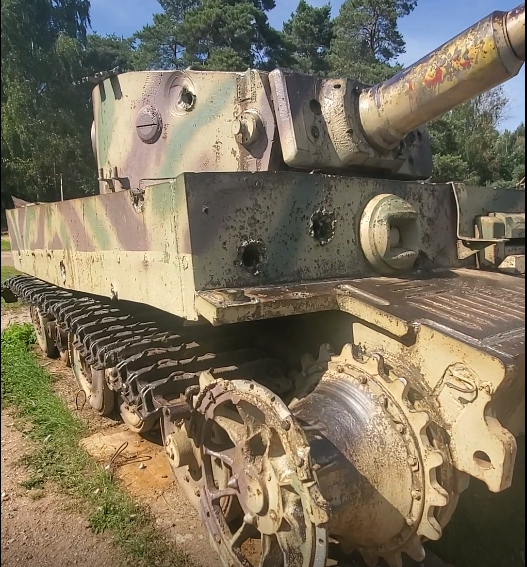One of the Last Remaining Tiger Tanks From WW2
The Pz.Kpfw. Vl Ausf.H Tiger tank that currently stands at Lenino-Snegiri is hull number 251227 and belonged to the 510th German heavy tank battalion that was found in a swamp along with 3 other Shermans. (Also at the museum). The tank was exhumed from a soviet firing range in the 1980’s by a Soviet War Archeologist. This is a very late war variant of the Tiger tank.
510th German Heavy Tank Battalion.


The 510th Heavy Tank Battalion was formed June 1944; in July it was sent to Lithuania, where it fought in the Courland Pocket until the end of the war, attached to the 14th Panzer Division. Elements of the battalion were evacuated from Courland and transferred to the Western Front, where they subsequently surrendered to the Western Allies. A battle group with the last 15 Tiger tanks was left behind in Courland, where it surrendered to the Red Army.
The pocket was Courland Pocket was created during the Red Army’s Baltic Offensive, when forces of the 1st Baltic Front reached the Baltic Sea near Memel during its lesser Memel Offensive Operation phases. This action isolated the German Army Group North from the rest of the German forces, having been pushed from the south by the Red Army, standing in a front between Tukums and Libau in Latvia, with the Baltic Sea in the West, the Irbe Strait in the North and the Gulf of Riga in the East behind the Germans. Renamed Army Group Courland on 25 January, the Army Group in the Courland Pocket remained isolated until the end of the war. When they were ordered to surrender to the Soviet command on 8 May, they were in “blackout” and did not get the official order before 10 May, two days after the capitulation of Germany. It was one of the last German groups to surrender in Europe.
Along with the defending Germans there was an approximately 20,000 Latvian Waffen SS of the Latvian Legion. Their fate was considerably harsher than the surrendering German forces due to the Latvian division’s complacency in recent warcrimes such as the Podgaje massacre of Polish POWs in 1945.


















